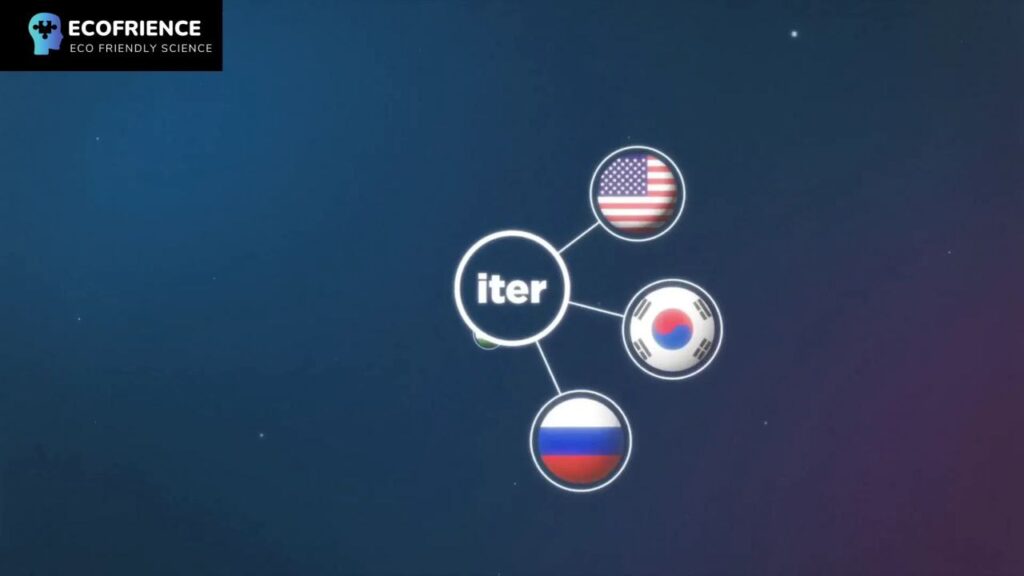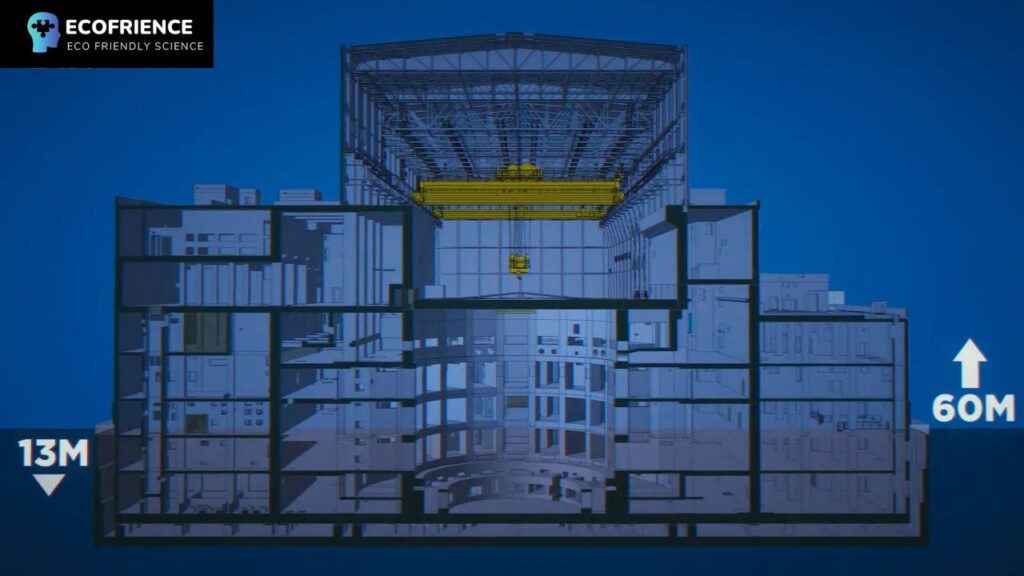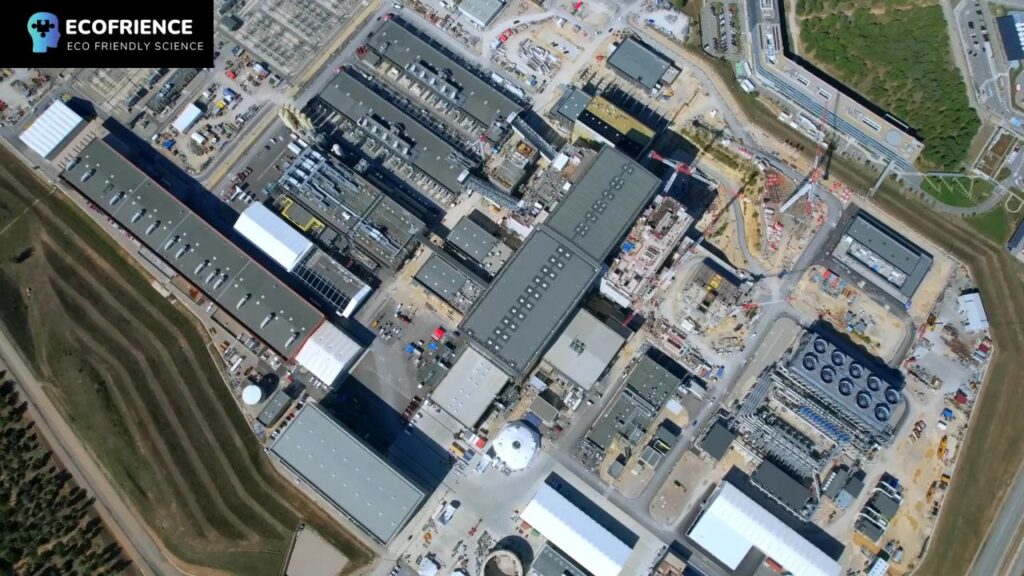
This is the world’s most challenging construction project: the largest and most powerful nuclear fusion reactor ever built. An amazing team of scientists and construction workers are trying to replicate what happens inside the Sun, potentially unlocking a source of clean and virtually inexhaustible energy. This endeavor demands one of the biggest international collaborations in history.

The answer has eluded scientists for decades. Now, it’s being seen as the great hope for generating clean power. If successful, it could help save the planet. Today is a historical moment; successful nuclear fusion has long been a dream for scientists worldwide. No fewer than 35 nations are teaming up and combining their strengths to build something that’s never been built before. Without this extraordinary partnership, the epic International Thermonuclear Experimental Reactor (ITER) simply wouldn’t be possible.

Although its origins can be traced back to the mid-20th century, a lot has happened since I first visited in 2012. Back then, we only scratched the surface of what was really going on inside these walls. We are building arguably the most complex machine ever designed. I just cannot believe the scale of the engineering challenge. Building something this complex is a Herculean task. It’s a humbling experience to work alongside people from all around the world; it’s one of the greatest things you can dream to work on. I’m here to see how this amazing team of people is managing this planet’s most monumental build.

Driving through the south of France, I can’t help but smile—not just because the sun is shining, but because I’m on my way to see the world’s coolest construction site. Set in a pine forest in the south of France is the world’s biggest nuclear experiment, the biggest and most expensive scientific experiment in human history. This place looks like nothing from the outside; it resembles an industrial complex. But inside these buildings, something truly astonishing is happening. Experts from dozens of nations have joined forces for a very important scientific experiment aimed at creating virtually limitless amounts of energy through nuclear fusion.

Before I explain what nuclear fusion actually is, it’s important to understand why it’s such a big deal. If humanity can make nuclear fusion happen at scale, it could solve one of our greatest challenges and quite literally change the world. Nuclear fusion is the ultimate source of energy in the universe, generating four million times more energy than fossil fuels like coal, oil, and gas. It also doesn’t emit any harmful greenhouse gases such as CO2. Unlike other forms of energy, there’s no fundamental reason why nuclear fusion is not achievable.

If the term “nuclear” makes you feel uneasy, fear not; a nuclear fusion reactor doesn’t create any long-lived radioactive waste. Additionally, there’s no plutonium or uranium involved, making it much harder to use for weapons. Instead, it uses tritium and deuterium, both isotopes of hydrogen, which are the most abundant elements in the universe.
So how does this work, and why are these reactors taking so much longer to master than traditional reactors? Producing energy from nuclear fusion is much more difficult than from nuclear fission. Instead of splitting atoms apart, fusion reactors fuse them together in a controlled way that releases huge amounts of energy. This mimics what happens inside the Sun, where hydrogen nuclei collide at extreme speeds and temperatures to form helium atoms.

This machine mimics that process but contains it inside a structure, which is not an easy task. All the construction work at ITER revolves around one central enormous device known as the tokamak. In basic terms, it’s an enormous chamber that uses giant magnets and a lot of heat to create plasma inside a vacuum. In just a few moments, I’ll journey to the heart of the tokamak to learn more about it and see the very place that could unlock a new power source that is clean, abundant, and affordable.
That’s why it’s seen as the Holy Grail of energy. Scientists have dreamed of controlling fusion energy and harnessing it to free humanity from limited oil supplies and the pollution of coal. If it sounds complicated, that’s because it is, and it’s one reason why construction took decades to even begin.

This is the massive assembly hall where components come before they’re thoroughly checked and then lifted over into the tokamak. I’ve been in here before, but walking in never gets old. It changes all the time, and it’s the most humbling experience. It’s massive—not just physically, but in terms of the scale of what they’re doing here. This is scientists and construction teams pushing boundaries that have never been broken before.

It’s difficult to convey the extreme complexity of this project. Nothing else comes close to it. The tokamak alone has a million components and 10 million individual parts, and everything has to be perfect—there’s no room for error. All individual components are brought here first, and huge cranes pick them up and carry them over for assembly in the tokamak pit.

For instance, all of the vacuum components must be 100% leak-tight because you don’t want leaks inside a vacuum, especially when it’s part of a fusion reactor. Specialist welding procedures are in place, and full-scale leak tests will be carried out leading up to the launch. ITER is even developing technologies that can detect leaks measuring the width of a hair divided by one million. It’s easy to see they’re taking this extremely seriously.

In fact, ITER’s beginnings go way back to the 1980s when Mikhail Gorbachev of the Soviet Union and US President Ronald Reagan formed the international fusion initiative. With the Cold War nearing an end, the two leaders wanted to create a new source of energy that is essentially inexhaustible for the benefit of all mankind. After its launch in 1986, other European countries joined the partnership along with Japan, and ITER was officially born.

Today there are seven ITER members, one of which is Europe, with its 27 EU countries. Switzerland and the UK are also partners but with less direct involvement. Around 45% of construction funding comes from European nations, while Japan, China, India, Russia, Korea, and the US cover about 9% each. It took until 2001 for the design of the reactor to be finalized along with a cost estimate of €5 billion for construction. A few years later, a site for this unique project was selected, and in 2010, building work finally got underway.

Four years were spent building the ground support structure and seismic foundations for the tokamak, which itself has been in the works for a decade. The building where it’s situated is enormous—a six-story structure that rises 60 meters above the ground and drops 13 meters below it.

Here it is: all 180 hectares of what’s been dubbed the ITER Enclave. It’s an area that France gave to the ITER organization to build this incredible machine. It’s crazy to think that in 2010 there wasn’t much here, but now look at it. The tokamak building and assembly hall take up a staggering amount of space, but they are just one part of a larger complex.
There are 39 different buildings and technical areas on this site, including cooling towers, a control room, waste management facilities, and a cryogenics plant that will make the liquid helium needed to cool the 10,000 tons of superconducting magnets. This is important because if they aren’t kept close to absolute zero (-269°C), the magnetic fields needed to maintain the plasma won’t be possible.

There will also be a huge area housing all the high voltage electrical systems and two large buildings for converting the electricity that comes in from alternating to direct current before it goes over to those massive magnets. What I’m basically standing in is the world’s biggest power adapter.
So who’s responsible for building all this? Unsurprisingly, some of the biggest construction firms in the world are involved, including major international collaborations. One of them is the VFR Consortium, which is delivering nine structures including the tokamak complex, the assembly hall, and the control building.
They have been in charge of the construction of the structural works of the tokamak complex and have installed more than 100,000 embed plates.

We’ve exhausted work to find cracks and monitor them, and we have faced high densities for the river. We’ve done specific concrete formulas for the tokamak construction and performed complex geometries as well as opening inside the building. VFR consists of two French companies, Vinci and Razel, along with Ferrovial of Spain. Together they’ve spent over a decade carrying out civil engineering works on the tokamak complex.
One of the first challenges was the cultural differences among the teams, but they have worked in a very open and friendly way, leading to incredible outcomes.

To get a better sense of the insane engineering involved in this massive project, I’ve been urged to take a look inside its foundations. Crawling underneath a nuclear fusion reactor that weighs as much as three and a half Eiffel Towers doesn’t sound like fun, but thankfully Duco Jansen, the construction manager for the ITER organization, has agreed to come with me.

This is unique—this is the basement of ITER. Here, you can see around 500 seismic bearings supporting the entire tokamak. These rubber pads isolate the whole tokamak assembly from the rest of the ground, absorbing energy during an earthquake.

When you’re down here, the contrast with the assembly hall is striking; it’s complex and clean up there, while down here it’s a standard construction site. This combination of rough civil works and fine mechanical work is one of the challenges of building it. It’s an extraordinary amount of work for a science project, but what they’re trying to do here simply can’t be done without going big.

One of the key elements during construction is the ring fortress, a massive steel and concrete bioshield that wraps around the tokamak, three meters thick and six stories high. Its purpose is to protect workers and the surrounding environment from radiation when the fusion reaction kicks in.

As Europe is the host member, most of the buildings and infrastructure come from across the continent, but one crucial element was built and supplied by a nation much further away. The ITER CHS is the largest stainless steel vacuum chamber in the world, manufactured in India and weighing almost 4,000 tons. This chamber surrounds the vacuum vessel and magnets, ensuring everything stays cool and protected.

Its immense size meant it had to be divided into 54 segments and shipped to Marseille in stages. But that wasn’t the end of their journey; they still had to be transported to the actual facility over 100 km away from the sea. Luckily, a specially modified road was built for that exact purpose, called the ITER itinerary.

This route stretches all the way from the nearest port to ITER HQ, enabling the largest pieces of the tokamak to be carried there on the back of huge vehicles. Bridges have been reinforced, junctions adapted, and roadways widened to accommodate the transport of these massive components.
Other examples of parts that come from outside Europe include the toroidal field coils, thought to be the most technically challenging element of the entire build. They have now all been successfully manufactured and are the biggest, most powerful superconducting magnets ever designed. Half of them were produced in Japan, and these components account for more than a quarter of the tokamak’s overall weight.

The complexity of this project is mind-boggling. An estimated 15,000 workers from 5,000 companies have participated in the construction, with around 90 countries represented in the workforce. ITER claims it has the broadest international participation of any science project on record.
This means that teams on the ground are not just faced with the incredibly complex task of assembly; they also navigate different construction methods, working cultures, and even language differences. Although English is the common language at the ITER site, only about 15% of the organization were native speakers in the early part of construction.
The differences in culture and approaches, combined with the complexity of the work, have made this an incredibly challenging but rewarding project.

One thing that’s proven crucial to delivering a project of this magnitude is the use of technology. Digital platforms like Procore have helped boost communication, collaboration, and efficiency on a scheme that certainly demands it. Fovial has been using Procore to complete a critical contract involving the design, supply, and installation of more than 200 nuclear doors for the tokamak complex.

Since embracing this tech, Fovial has seen significant improvements in areas like project management, decision-making, and problem-solving. Technological assistance has been critical to helping ITER get to its current position and steadily inching towards its goal of coming online in the near future. As of now, more than three-quarters of all design, manufacturing, construction, transport, assembly, and installation activities have been completed.

So how is ITER creating what’s basically a mini star here on Earth to generate power? It’s time for me to gear up and head to the very spot where it’s set to happen. Here’s the entrance to the pit, where the tokamak is coming together.

Scientists wish to control fusion and must cope with its enormous heat. They hope to use this technology as a cornerstone for a fusion reactor. Everything you see on the ITER site—the infrastructure, buildings, and assembly rooms—are geared up to this spot. The experiment involves an enormous vacuum chamber surrounded by powerful superconducting magnets where hydrogen fuel is released inside to form plasma, a super hot gas full of electrical charge.

To achieve this, hydrogen atoms are heated to extreme temperatures as high as 150 million degrees Celsius. At this point, they fuse together and unleash energy. The enormous D-shaped magnets, known as toroidal field coils, confine plasma inside the vessel, and there are 18 of them in total, working in combination with six ring-shaped magnets called poloidal field coils.

Once the plasma is created and held in position, this area will become both the hottest and coldest place in the known universe. A key aspect of this process is the concept of confinement, which requires very strong magnets. Interestingly, these magnets work much better when cooled to a very low temperature, only a few degrees above absolute zero. At the same time, the very hot plasma is only a few centimeters away, making the engineering challenge even more complex.

Once everything is assembled, it will be time to turn it on. The original idea was to do this for just milliseconds on low power to create something known as first plasma, but that all changed recently. It’s important to recognize that another team of scientists has already managed to achieve nuclear fusion on a limited scale. What ITER is doing is much bigger and aims to take things further by being the first to create burning plasma, where the fusion reaction becomes self-sustaining and continues to generate energy without much additional heating.

Most of the physical infrastructure is already built and in place, but there have been setbacks. In November 2022, ITER revealed significant issues with some components, resulting in time-consuming repairs. Cracks in cooling pipes and non-conformities in parts of the vacuum vessel need to be fixed before work can continue.

The project hasn’t gone entirely smoothly, but teams here are trying to break new frontiers. They’re doing something that hasn’t been done before, and trying to get it right the first time was always going to be a tough ask. What they’re attempting could be revolutionary, but it’s important to note that ITER is an experimental reactor and will not produce electricity for the grid.

The idea behind ITER is to prove that fusion can be done at the scale needed, and then for others to learn from what’s achieved here. Although this may sound anticlimactic, it shouldn’t be, as multiple organizations are designing and building their own fusion reactors and making progress.

For instance, Germany’s Wendelstein 7-X stellarator achieved first plasma back in 2015 and maintained a stable reaction for eight minutes—a significant breakthrough. Similarly, in December 2022, scientists at the National Ignition Facility in California achieved fusion ignition, producing more energy from a fusion reaction than was put in to start it.

All of these organizations, along with private startups that have begun their own projects, are united under one goal: to bring nuclear fusion energy to the grid. What makes ITER unique is that it unites 35 nations, pooling resources and talent to help this project take a significant step forward.

In summary, ITER is not just a construction project; it’s a monumental endeavor that embodies the collaborative spirit of humanity, aiming to unlock the secrets of nuclear fusion and pave the way for a cleaner and more sustainable energy future.
FAQ
- What is nuclear fusion?
- Nuclear fusion is the process of fusing atomic nuclei to release energy, similar to what occurs in the sun.
- How does ITER contribute to fusion research?
- ITER aims to demonstrate the feasibility of fusion as a large-scale and carbon-free source of energy.
- Why is fusion considered a cleaner energy source?
- Fusion produces no long-lived radioactive waste and does not emit harmful greenhouse gases.
- What challenges does ITER face?
- ITER faces engineering complexities, cultural differences, and technical setbacks that can delay progress.
- When is ITER expected to start producing energy?
- ITER is an experimental reactor and will not produce energy for the grid; it aims to demonstrate fusion capabilities for future reactors.
